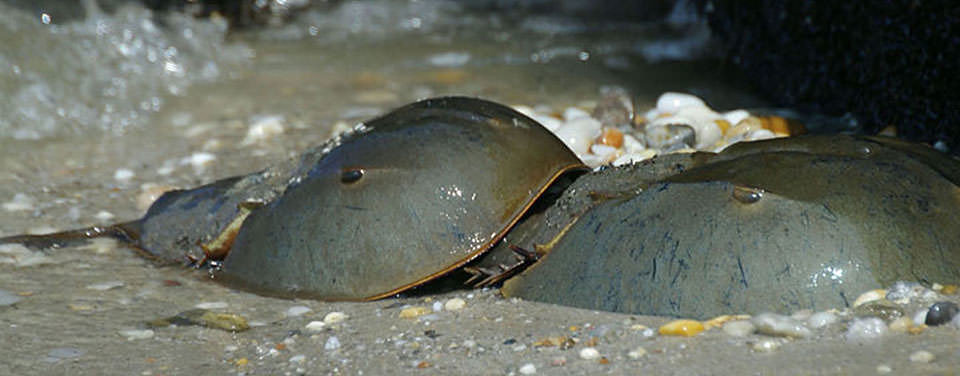Context:
Environmental organizations petitioned the US government to conserve the American horseshoe crab, a “living fossil,” as an endangered species.
About Horseshoe Crabs:
- They are marine and brackish water arthropods belonging to the Limulidae family.
- Ancient Origins: They have been around for over 450 million years, antecedents of dinosaurs.
- Appearance: It resembles prehistoric crabs, but its closest relatives are scorpions and spiders.
- Habitat: They prefer shallow coastal waters with soft sandy or muddy bottoms.
- Spawning: They migrate to intertidal beaches for spawning, primarily during summer-spring high tides. This timing ensures their eggs are deposited in moist sand, which is essential for development.
- Threats: Horseshoe crab populations have fallen in recent decades, with breeding levels down two-thirds from 1990 in the Delaware Bay estuary, which was formerly their main bastion.
- Conservation status: Included in Schedule IV of the Wildlife Protection Act 1972.
Type of species and habitat:
Atlantic or American horseshoe crabs: They are mostly found on the Atlantic coast of the US and the Southeast Gulf of Mexico.
- IUCN status: Vulnerable
Coastal horseshoe crab: This is a larger horseshoe crab, which can sometimes be seen on sandy coasts near reefs and seagrass meadows. They are often seen in pairs, with the tiny male sitting on top of the larger female. It is also found in mangrove forests, sandy beaches, and muddy bottoms.
- IUCN status: Endangered
Tri-spine horseshoe crab: This type of crab is found in the coastal waters of southeast Asia, China, Japan, and Odisha (India).
- IUCN status: Endangered
Mangrove horseshoe crab: They can be found in tropical marine and brackish environments throughout India, Bangladesh, and Southeast Asia. It may occur in Sri Lanka, Myanmar, and the Philippines. It is the only species of the genus Carcinoscorpius.
Significance of Horseshoe crabs: They play an important ecological role as a food source for migratory shorebirds and other animals, and their eggs are an important food source for fish and other marine animals.

